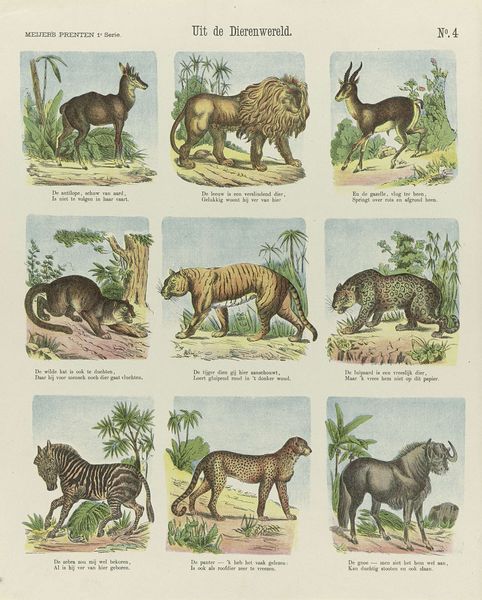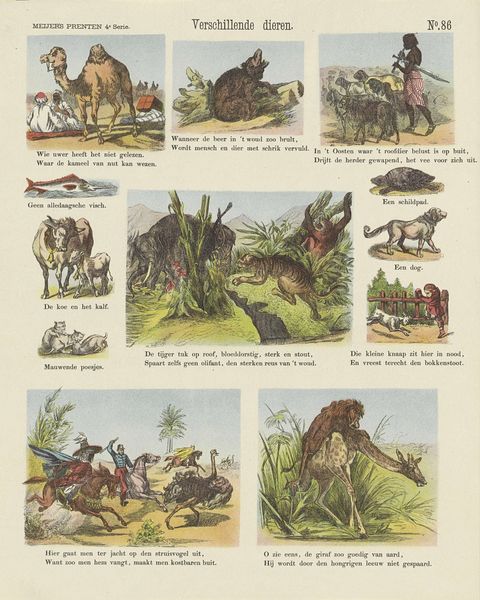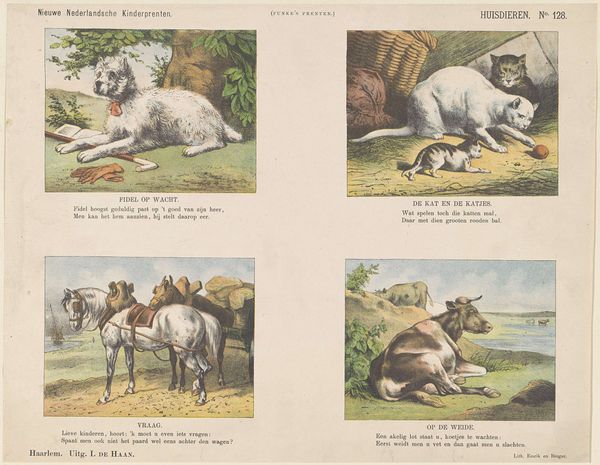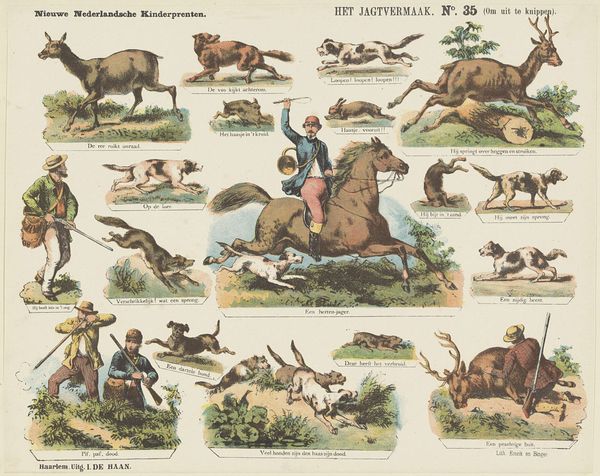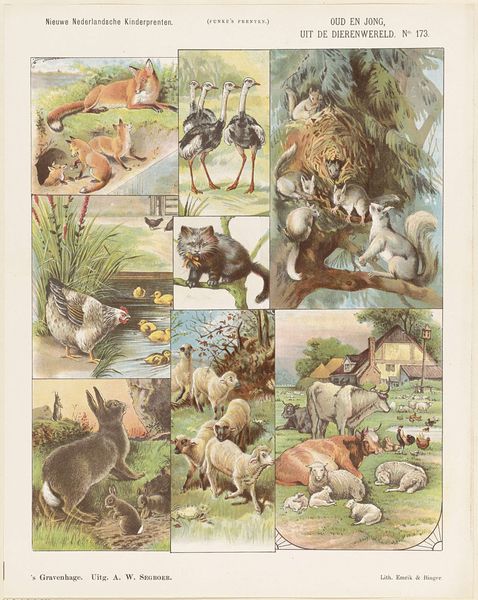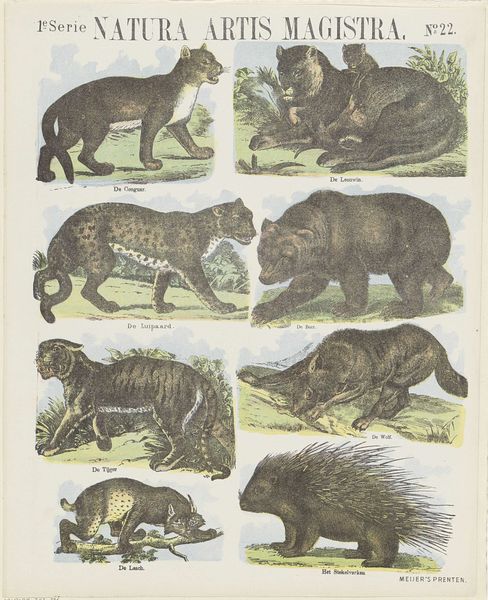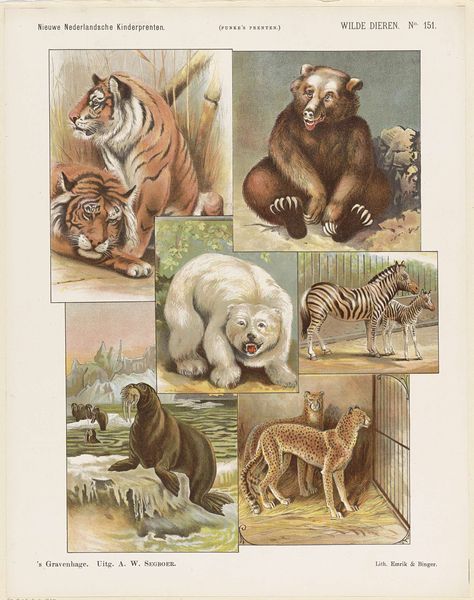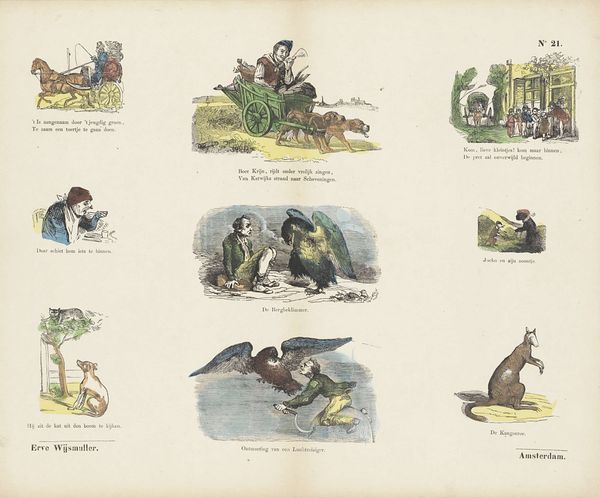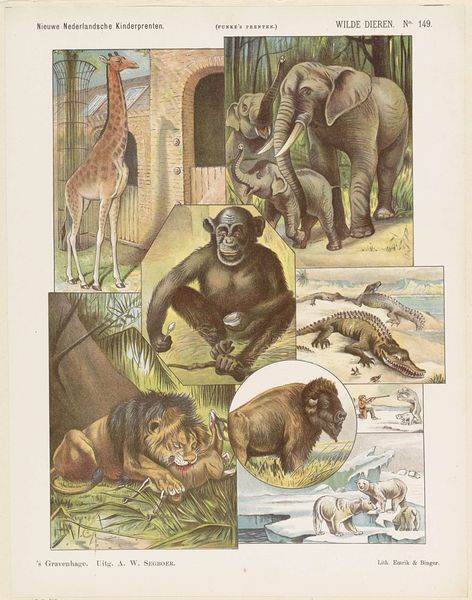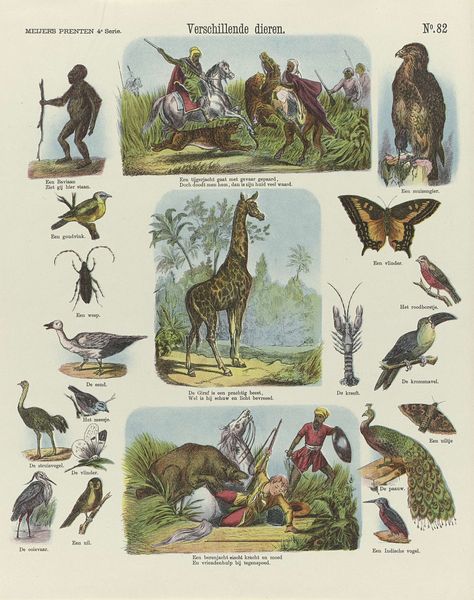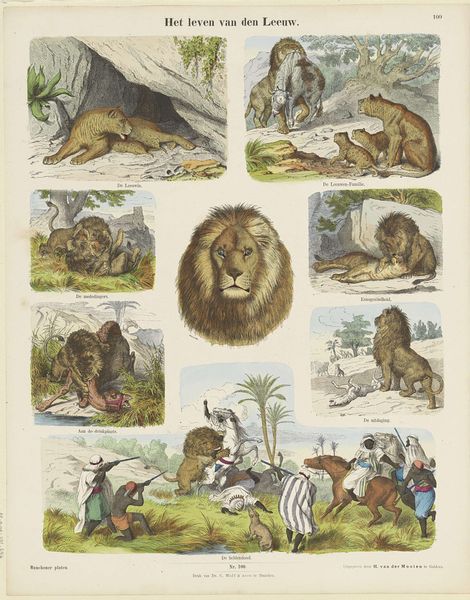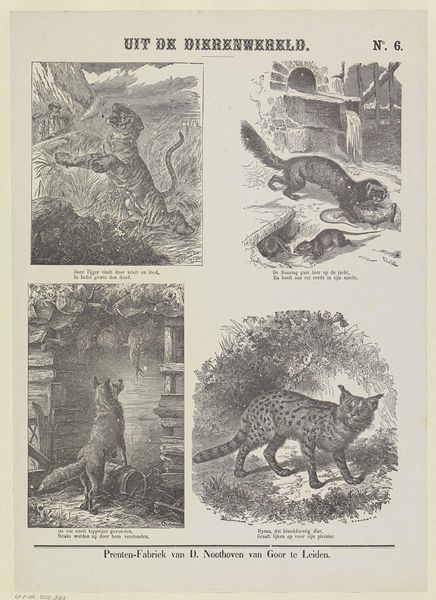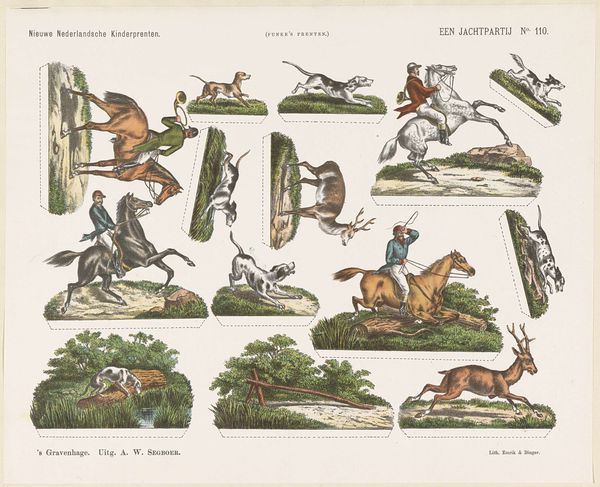
#
narrative-art
# print
#
folk-art
#
realism
Dimensions: height 345 mm, width 430 mm
Copyright: Rijks Museum: Open Domain
Curator: This print, titled "Verscheurende dieren / (2)," was created by Jan de Haan between 1875 and 1903. It is listed as a 'print', and I immediately notice its compelling use of division through the panel design, but its color strikes me as very odd considering the theme... Editor: Odd, how? To me, the whole piece screams "childhood primer"— the composition is direct, the colours bright, as if created to ease anxiety. It’s fascinating how its realism brushes shoulders with its playful elements, no? Curator: It's that very intersection of blunt depiction and intended audience that fascinates me! We see elements of folk art, likely aiming to convey simple moral narratives. The formal choices here – the compartmentalization, the flatness – feel almost secondary to the storytelling... Editor: Are they secondary, though, or inextricably linked? Observe how each animal – fox, tiger, wolf, lion – is rendered in isolation. There is not a sense of natural blending, which in a way intensifies their innate 'otherness', thus strengthening their character for narrative strength. I also find it interesting how the image has four scenes; consider if we break them down through narrative lenses. Each section works like its own storybook panel, focusing attention sequentially to different animals engaged in predatory acts, right? Curator: You bring up an essential point! Analyzing this work through a social lens allows us to discuss the role of didactic imagery and children's books of the period. The composition could reflect how visual narratives for younger audiences had a more rudimentary or literal style. Editor: Exactly! Each little frame acts like a separate mini-drama – or perhaps nightmare? —packaged neatly onto one page. The narratives aren't explicitly gory, it’s implied from the lion's leftovers—but the implications resonate throughout! It would be intriguing to know more about how it was received back then. Curator: Precisely; I concur about delving into the historic contexts to grasp its true implications. However, looking closer at each section through design is how it has lasting cultural influence and visual presence. Editor: Absolutely! What looked 'merely simple' turns out to encompass surprising cultural complexity upon scrutiny.
Comments
No comments
Be the first to comment and join the conversation on the ultimate creative platform.
